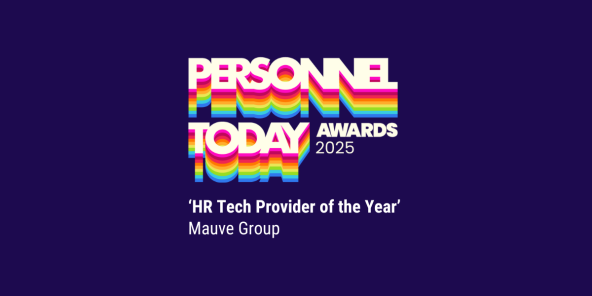Global Collaboration:
New Social Media Functions & Their Benefit to Remote Workforces

Every week, there’s a new algorithm, feature or filter on social platforms, sparking immediate reaction from users as to their positive and negative benefits.
The most popular platforms Twitter, Snapchat, Instagram/Facebook and LinkedIn are experiencing something of an arms race to launch the latest original functionality; the goal being to bring constant newness to a format that has considerably shortened our attention spans. This sense of one-upmanship of social media functionality has been visible ever since Snapchat’s revolutionary storifying of updates – staying ahead of the curve is vital in retaining users and has catalysed significant social innovation.
What does this matter to the global mobility industry? A great deal, it would seem. In 2019’s business environment, social media is not simply the realm of the marketing department. Social platforms are communities by their very name and philosophy and are increasingly valuable to workers in globally-mobile businesses beyond the expected marketing function. They are being utilised as sharing spaces for ideas – a group Instagram story can now act as a theoretical breakroom or meeting place. The benefits of social from a global marketing or e-commerce perspective are obvious, but these platforms also have key significance in building tight-knit workplaces regardless of physical location.
How are the big hitters developing new uses of their platforms to respond to business needs? What functions are being implemented and how can they benefit a globally-minded organisation? In this week’s article, we unpick the new features of social media and the ways in which they are being harnessed to facilitate the rise in remote or international workforces.
Facebook/Instagram
Facebook is focusing heavy attention on their Stories function in response to this feature’s popularity on Instagram (a Facebook-owned platform) and Snapchat – Facebook’s founder Mark Zuckerberg has called stories “the future of sharing”. The platform’s latest feature, currently being tested on users in the US, Brazil and Mexico, allows you to share events in your stories; friends are able to indicate whether they are “Interested” in attending or “Going” using in-story tappable stickers, which also provide event details, links to event pages and the ability to strike up Messenger conversations with responsive users.
The new Facebook Watch feature is still in the process of rolling out worldwide and allows users to see the videos their friends are watching and gauge their interests.
Finally, Facebook Collaborative Group Stories have been launched to users of Groups and Events; this feature acts like a private hashtag, releasing a Story only visible to members of that group or event. Content for this story can be added by any group member and is moderated by the group’s admins.
Facebook is clearly focused on developing the community-side of their platform through the introduction of features designed to foster collaboration and sharing. Group stories aid remote workers in sharing content from wherever they are – whether for professional purposes, team building or perhaps corporate social responsibility exercises.
For example, staff taking part in a group charity run in the UK can stream and post content to create a patchwork story of their day. At the same time, global or remote staff can also contribute messages and videos of support towards their colleagues and perhaps share fundraising links. Tools such as these foster a sense of a team regardless of location, making all feel part of a shared experience – this will go some way to counter feelings of isolation that can emerge from home working.
LinkedIn is the largest corporate-focused social media platform, and has made impressive adaptations to its functionality to suit the changing nature of its user base. The platform’s features actively encourage individual opinion and sharing, rather than simply faceless corporate/sales-focused messaging as was once the case. As LinkedIn stated themselves in a recent blogpost, “over the past year we’ve focused on bringing conversations to the forefront.”
Video is a key driver in this aim; in one year, LinkedIn video posts generated more than 300 million impressions, and earned an average of 3 times the engagement of text posts. Early findings from LinkedIn’s beta program showed than LinkedIn native videos are 5 times more likely than other content to start a conversation among members – for this reason, organic LinkedIn video is becoming increasingly popular. Closed captioning allows workers to watch and share video sound-free, for example if they are in a meeting or travelling, and videos and other rich media are now shareable in Groups as well as directly on the feed.
With the rebuilding of the Groups function in 2018, LinkedIn has developed professional forums available on-the-go and direct from the feed, enabling industry insiders to ask questions and share thoughts and best practice in a way that would ordinarily be served by a face-to-face networking event, conference or meeting. This enables remote or international workers to share in the conversation without the need for a costly plane ticket. Groups matching your interests are now recommended in your feed, making it easier than ever to find like-minded people.
The functionality of LinkedIn articles has also been improved to conversation tools; quotes from articles can be highlighted on mobile and shared directly with your network in your feed, and LinkedIn Content Suggestions have provided admins with a bank of relevant content their member community is engaging with, filterable by elements like audience, industry, location and so on.
This shift in LinkedIn’s focus has opened up a willingness to share more personalised and visual content amongst users, and as a result LinkedIn is encouraging collaborative communities in comments sections. Personalisation brings us closer to our connections, and affords us the ability to share in our colleagues’ professional triumphs and viewpoints wherever we are situated.
What can we expect in the future?
Myriad new social media platforms regularly crop up, but often struggle under the weight of the key global platforms we check and contribute to almost every minute. Some new models present new ideas or features that may be adopted by some of the big hitters or become successful in their own right.
A new platform called Steemit is one such platform. An alternative to Reddit, Steemit is run on the Steem blockchain with STEEM cryptocurrency. Content is stored on a secure blockchain ledger, and contributors are rewarded for actions on the platform with digital STEEM tokens. The tokens represent vested interest in the platform itself and can grow or diminish in value depending on platform activity – they can be won by post sharing, voting and curating/discovery of new content.
Having studied in this article the shift towards collaboration, rich media and sharing, and the way in which platforms are enthusiastically encouraging such activity, it is not too much of a stretch to suggest that the main players may bring onboard a Steemit-like format whereby users are rewarded for their collaboration and contributions to social media functions – attributing further value to the contributions in an elevated version of the existing social engagements such as “likes” and comments.
A function like this could be amalgamated by corporate social platforms like Yammer as an element of employee benefits programmes – if a suggestion in a company group is considerably upvoted and championed, some form of crypto-reward could be attributed or associated back to an employee benefits points scheme.
These are speculative ideas; it is obviously unclear if formats like this will indeed get picked up and become a genuine feature of the main social applications – but in the same way current social functions are helping remote, internationally-mobile and potentially isolated workers to feel part of a shared experience, attributing a perceivable reward to a social action could further boost engagement in company culture. Social media platforms themselves are clearly of great value in allowing individuals to feel part of something regardless of their location, and fostering this cooperative atmosphere can greatly benefit an internationally-minded businesses.
Want to share your views or discover more insights into remote working and the changing face of global work? Get in touch via our social channels or the Contact form on the homepage and let us know your thoughts.

Mauve Group wins 'HR Tech Provider of the Year' at the Personnel Today Awards 2025
Discover how and why Mauve Group secured the 'HR Tech Provider of the Year' award at the Personnel Today Awards 2025.


Mauve Group a double finalist in prestigious tech awards
Mauve Group celebrates double finalist recognition at the Personnel Today Awards and Wales Tech Awards, highlighting excellence in innovation and technology leadership.
